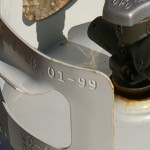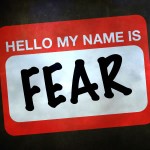By RSOPerator
Nerve agents are weaponized chemicals engineered to interfere with the nervous system causing the death of the intoxicated individual. They are readily absorbed into the body by inhalation, ingestion, and/or dermal contact and exert their biological effects by inhibiting acetylcholinesterase (pronounced (ə-sēt’l-kō’lə-nĕs’tə-rās’, -rāz’)) enzymes. Nerve agents are the most toxic of all currently known chemical warfare agents.
The majority of nerve agents belong to a class of compounds called organophosphates (OP). Organophosphates are the basis of many insecticides, herbicides, and are widely used as solvents, plasticizers, and extreme pressure (EP) additives.
G-type nerve agents (GA, GB, and GD) are clear, colorless liquids that are volatile at ambient temperatures. VX is an amber-colored, oily liquid with low volatility unless ambient temperatures are high.
A variety of odors have been reported as an indication of exposure to nerve agents, but this appears to be highly subjective and dependent on the presence of chemical impurities. Therefore odor should not be considered in an attempt to identify the presence of specific nerve agents.
Detection
Chemical agent detectors sensitive to nerve agents (CAM, M18A2, M256, etc.) and papers (M8, M9) are utilized for detection.
Detection of nerve agents may also be confirmed by observing key medical symptoms in individuals associated with nerve agent intoxication.
Symptoms & Effects
Depending on the degree of intoxication, symptoms may include:
- • Nervousness and/or restlessness
- • Miosis (contraction of the pupil)
- • Rhinorrhea (runny nose)
- • Excessive salivation
- • Dyspnea (difficulty in breathing due to bronchoconstriction/secretions)
- • Sweating
- • Bradycardia (slow heartbeat)
- • Tachycardia (fast heartbeat)
- • Loss of consciousness
- • Convulsions
- • Flaccid paralysis
- • Loss of bladder and bowel control
- • Apnea (breathing stopped)
The onset of rhinorrhea and difficulty breathing is usually very rapid, occurring within seconds to minutes of exposure to nerve agent vapors, and within half an hour of exposure to liquid agents.
Miosis is a very characteristic symptom of nerve agent intoxication. Victims will often report difficulty in seeing (blurred & dimmed vision).
Medical Treatment
Atropine sulfate: The immediate treatment for nerve agent intoxication is intravenous injection of 2 mg atropine sulfate (pediatric dose calculate based on 0.02 mg/kg with a minimum dose of 0.1 mg) (intramuscular injection should be considered if the patient is hypoxic and ventilation can not be initiated, as there is a risk of ventricular fibrillation). An initial dose of 5 mg atropine sulfate (pediatric dose calculate based on 0.05 mg/kg) should be used for severe intoxication This should be followed by additional injections of atropine at 10-15 minute intervals, continuing until bronchoconstriction has been eliminated and secretions dried. (At this point in the treatment, bradycardia, if it was present, should also have been reversed; miosis will not be reversed by systemic atropine) If breathing has stopped, a mechanical respirator should be used to ventilate the patient. If possible, oxygen or oxygen-enriched air should be used for ventilation. Also if possible, cardiac activity should be monitored. Do NOT attempt mouth-to-mouth resuscitation under any circumstances.
Oximes: Oximes (pralidoxime salts, obidoxime) can help to restore acetylcholinesterase activity, though their effectiveness varies with the agent involved in the intoxication. Obidoxime is the most generally useful oxime, however, it has been known to cause liver damage. In general, absent specific information on the agent, use of pralidoxime salts should be considered, with a slow intravenous infusion of pralidoxime chloride of 500 mg to 2 g (pediatric dose calculate based on 15-25 mg/kg) being given initially. An intramuscular injection of 1 mg in 3 mL sterile saline may be used if an IV cannot be established. Repeat doses at hourly intervals should be considered if the clinical condition does not change or if it worsens.
Diazepam: Diazepam should be administered to control convulsions. It also has value in controlling fear on the part of the patient. An initial dose of 5 mg may be followed by additional doses at 15 minute intervals up to a maximum of 15 mg.
Rescuer Safety & Precautions
Initial care should include terminating patient exposure to the agent by removal of the patient from the contaminated area followed by thorough decontamination. Only rescuers provided with a full ensemble of LEVEL A chemical protective gear should enter a contaminated area in an attempt to rescue individuals unable to assist themselves.
Supportive care involves ensuring an airway, and early intubation (placement of a flexible plastic breathing tube into the trachea) for victims with significant exposures. The use of succinylcholine to assist intubation is contraindicated due to possible interactions with nerve agents.
Individuals treating casualties should avoid any direct skin-to skin contact. LEVEL A chemical protective gear MUST be used. Latex gloves are NOT adequate protection. Patients should be removed from exposure and decontaminated as rapidly as possible (see the section on decontamination below). Patients must not be moved into clean treatment areas where unmasked/ungloved personnel are working until decontamination is complete.
The combustion products produced by the burning of nerve agents are generally less toxic than the agents. If nerve agents are burning and other considerations permit it, the fire should not be extinguished.
Agents absorbed by cloth may be released as a vapor by the cloth for a significant period after exposure. Therefore the handling of discarded cloth items that has been contaminated by agents should only be carried out by personnel wearing LEVEL A chemical protective gear.
Decontamination
Victims
- • Remove victim from contaminated zone
- • Remove contaminated clothing, personal jewelry, etc.
- • Wash with copious amounts of water at a comfortable (tepid) temperature
- • Wash with 0.5% hypochlorite solution (mixture of 1 part household bleach with 9 parts water) or, alternately, soap and water
- • Rinse with copious amounts of tepid water
In general, you will encounter only small amounts of residual liquid contamination among survivors, since exposure to large amounts of liquid nerve agent is rapidly fatal.
Property
Surface decontamination is accomplished using hypochlorite bleach slurries, dilute alkalis, or DS2 decontaminating solution. Note that some agents will generate toxic reaction products when treated with decontaminants. If possible, decontamination of facilities and equipment should be deferred until the specific agent that is the source of contamination has been identified.
Adsorbent powders (talc, flour, etc.) can be utilized to contain liquid agents.
Disclaimer: Responsible use of the information provided here lies with the reader, not with us. Radical Survivalism and the author shall not be held liable for the use or misuse of this information. As always, please be safe and act responsibly.







